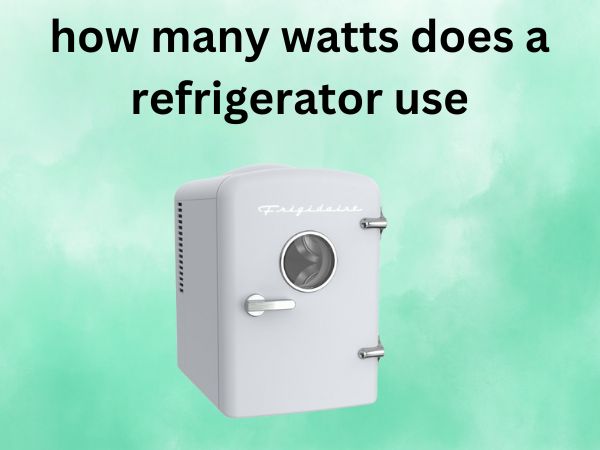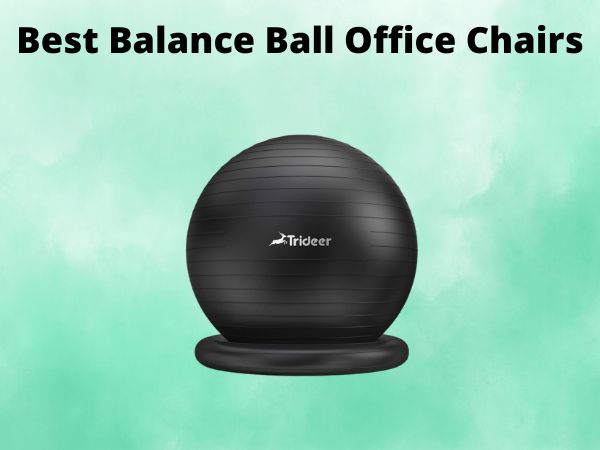How Many Watts Does a Refrigerator Use [The Complete Guide]
Ever wondered why your electricity bill seems to climb higher each month? Your refrigerator might be the silent culprit behind those rising costs. As one of the few appliances that runs 24/7 in your home, understanding how many watts your fridge consumes isn’t just about satisfying curiosity—it’s about taking control of your energy expenses and making smarter choices for your wallet and the environment.
Table of Contents
Understanding Refrigerator Power Consumption Basics
Before we dive into the numbers, let’s get our bearings straight. Your refrigerator doesn’t operate like a light bulb that simply turns on and uses a constant amount of power. Instead, it’s more like a marathon runner who alternates between sprinting and jogging throughout the day.
What Are Watts and Why Do They Matter?
Think of watts as the speed at which your refrigerator consumes electricity. Just like miles per hour tells you how fast a car is traveling, watts tell you how quickly an appliance is using electrical energy. The more watts an appliance uses, the more it’s costing you every hour it runs.
But here’s where it gets interesting—your fridge doesn’t use the same amount of watts all day long. When the compressor kicks in to cool things down, it might use 150-400 watts. When it’s just maintaining temperature, it might use significantly less or even cycle off completely.
How Refrigerators Actually Use Electricity
Your refrigerator operates on what we call a “duty cycle.” Picture it like this: imagine you’re trying to keep a campfire at the perfect temperature for cooking. Sometimes you need to add more wood (compressor running), and sometimes you just let it burn steadily (compressor off). Your fridge works similarly, constantly monitoring internal temperature and adjusting its energy use accordingly.
The compressor—your fridge’s hardest-working component—is responsible for most of the energy consumption. When it’s running, that’s when you see the highest wattage draw. Modern refrigerators typically cycle on and off throughout the day, running about 30-50% of the time under normal conditions.
Average Wattage Range for Different Refrigerator Types
Not all refrigerators are created equal when it comes to power consumption. The type, size, and age of your fridge all play crucial roles in determining how many watts it uses.
Standard Full-Size Refrigerators
Your typical full-size refrigerator—the kind you’ll find in most American kitchens—usually consumes between 100-400 watts when the compressor is running. On average, you’re looking at about 150-250 watts for most modern units. Over the course of a full day, considering the duty cycle, this translates to roughly 1-2 kilowatt-hours (kWh) of energy consumption daily.
To put this in perspective, that’s like running a bright LED light bulb continuously, or about the same energy your laptop uses if you left it on all day. Not too shabby for an appliance that’s working around the clock to keep your food fresh and safe.
Compact and Mini Refrigerators
Smaller doesn’t always mean more efficient, but compact refrigerators typically use 50-100 watts when running. These little workhorses are popular in dorm rooms, offices, and as secondary fridges in garages or basements. While they use less total energy, their watts-per-cubic-foot ratio might actually be higher than full-size models due to less efficient insulation and smaller compressors.
Side-by-Side and French Door Models
These premium models often come with additional features like ice makers, water dispensers, and multiple cooling zones. Consequently, they tend to be on the higher end of the wattage spectrum, typically consuming 200-400 watts when all systems are running. The ice maker alone can add 50-100 watts to your refrigerator’s energy consumption when it’s actively making ice.
Energy Star Certified Refrigerators
Here’s where modern technology really shines. Energy Star certified refrigerators are designed to use at least 20% less energy than standard models. These efficient units typically consume 100-200 watts, with some of the most advanced models using even less. If you’re in the market for a new fridge, the Energy Star label is your friend—it’s like getting a fuel-efficient car instead of a gas guzzler.
Factors That Affect Your Refrigerator’s Power Usage
Understanding the baseline wattage is just the beginning. Several factors can significantly impact how much energy your refrigerator actually consumes in real-world conditions.
Age and Model of Your Refrigerator
Age isn’t just a number when it comes to refrigerators—it’s a major factor in energy efficiency. If your fridge is more than 10-15 years old, it might be using 30-50% more energy than modern equivalents. Those avocado-green beauties from the 1970s? They could be consuming 400-600 watts or more, making them genuine energy hogs by today’s standards.
Think of it like comparing a classic muscle car to a modern hybrid. Both get you where you need to go, but one uses significantly more fuel to do it.
Size and Capacity Considerations
Bigger isn’t always worse, but it’s usually more energy-intensive. A 25-cubic-foot refrigerator will generally use more watts than an 18-cubic-foot model, but the relationship isn’t always linear. Sometimes, larger refrigerators are more efficient per cubic foot because they have better insulation and more advanced cooling systems.
Features and Add-ons That Impact Energy Use
Modern refrigerators come loaded with convenience features, but each one comes with an energy cost. Ice makers can add 10-15% to your fridge’s energy consumption. Water dispensers, built-in TVs, Wi-Fi connectivity, and multiple temperature zones all contribute to higher wattage usage. It’s like adding accessories to your car—each one affects your fuel economy.
Environmental Factors in Your Kitchen
Your kitchen environment plays a bigger role than you might think. If your refrigerator is next to your oven, in direct sunlight, or in a particularly warm room, it has to work harder to maintain cool temperatures. This can increase energy consumption by 10-25%. Similarly, if you’re constantly opening the door (looking at you, midnight snackers), your fridge has to work overtime to restore the internal temperature.
How to Calculate Your Refrigerator’s Actual Energy Costs
Numbers are great, but what do they mean for your monthly budget? Let’s break down how to translate watts into dollars and cents.
Finding Your Fridge’s Wattage Information
First, you need to know your refrigerator’s specifications. Check the energy guide label (usually yellow) on your appliance, or look for the model number and search online. You can also use a plug-in energy monitor—these handy devices measure actual power consumption and can give you real-time data about your fridge’s energy use.
Monthly and Annual Cost Calculations
Here’s a simple formula to calculate your costs: Daily kWh × 365 days × your electricity rate per kWh = annual cost
For example, if your refrigerator uses 1.5 kWh per day and your electricity costs $0.12 per kWh: 1.5 × 365 × $0.12 = $65.70 per year
That means your refrigerator costs about $5.50 per month to operate. Not too bad for an appliance that works 24/7, right? However, if you have an older, less efficient model using 3 kWh per day, you’re looking at about $131 annually—double the cost.
Tips to Reduce Your Refrigerator’s Energy Consumption
Ready to cut down on those energy costs? You don’t necessarily need to buy a new refrigerator to see significant savings.
Maintenance and Optimization Strategies
Think of your refrigerator like your car—regular maintenance keeps it running efficiently. Clean the coils on the back or bottom of your fridge every six months. Dusty coils make your refrigerator work harder, potentially increasing energy consumption by 10-15%. It’s like driving with dirty air filters in your car.
Check your door seals regularly. A simple test: close the door on a piece of paper. If you can pull it out easily, your seals might need replacement. Poor seals let cold air escape, forcing your compressor to work overtime.
Keep your refrigerator and freezer at optimal temperatures: 37-40°F for the fridge and 0-5°F for the freezer. Every degree colder than necessary can increase energy consumption by 5%.
Smart Usage Habits That Save Energy
Small changes in how you use your refrigerator can add up to significant energy savings. Don’t leave the door open while deciding what to eat—every minute of open-door time can take 3-5 minutes of compressor running to recover. It’s like leaving your front door open while running the air conditioning.
Keep your fridge reasonably full, but not overcrowded. A well-stocked refrigerator maintains temperature better than an empty one because the food items help retain cold. But don’t pack it so full that air can’t circulate—your fridge needs breathing room to work efficiently.
When to Consider Upgrading Your Refrigerator
Sometimes, the most cost-effective solution is knowing when to say goodbye to your old faithful appliance.
If your refrigerator is more than 15 years old, constantly needs repairs, or you notice your electricity bills climbing steadily, it might be time for an upgrade. A new Energy Star refrigerator could save you $100-200 annually compared to a 15-year-old model, potentially paying for itself over 5-10 years through energy savings alone.
Modern refrigerators also offer better food preservation, quieter operation, and features that can actually help reduce food waste—another form of savings that’s easy to overlook.
FAQs
Q: How many watts does a typical refrigerator use per hour? A: Most modern refrigerators use between 100-400 watts when the compressor is running, but they don’t run continuously. On average, a standard refrigerator uses about 1-2 kWh per day, which translates to roughly 40-80 watts of continuous power when averaged over 24 hours.
Q: Does an older refrigerator use significantly more watts than a new one? A: Yes, significantly more. Refrigerators older than 15 years can use 30-50% more energy than modern Energy Star models. A 1990s refrigerator might consume 400-600 watts compared to 100-200 watts for a comparable modern efficient model.
Q: Will unplugging my refrigerator when I go on vacation save money? A: For short trips (less than a week), the energy savings are minimal and you risk food spoilage. For longer vacations, you can save $10-20 per month, but make sure to clean out all food, leave doors slightly open to prevent mold, and restart it a few hours before returning.
Q: How much does it cost to run a refrigerator for a month? A: At the national average electricity rate of about $0.12 per kWh, a typical refrigerator costs $4-12 per month to operate. Energy-efficient models lean toward the lower end, while older or larger models with extra features cost more.
Q: Can using a power strip or surge protector affect my refrigerator’s wattage consumption? A: A quality surge protector won’t significantly affect energy consumption, but avoid using extension cords or power strips not rated for high-wattage appliances. Poor electrical connections can actually increase energy waste and pose safety risks. Always plug your refrigerator directly into a wall outlet when possible.
Conclusion
Understanding your refrigerator’s wattage isn’t just about satisfying technical curiosity—it’s about making informed decisions that affect your wallet and environmental footprint. Most modern refrigerators use between 100-400 watts when running, translating to roughly $50-150 in annual operating costs depending on your local electricity rates and usage patterns.
The key takeaway? Your refrigerator’s energy consumption depends on multiple factors including age, size, features, and how you use it. While you can’t eliminate this energy use entirely (food safety requires refrigeration), you can optimize it through proper maintenance, smart usage habits, and knowing when it’s time to upgrade to a more efficient model.
Whether you’re looking to reduce your carbon footprint, lower your electricity bills, or simply understand your home’s energy usage better, knowing your refrigerator’s wattage is a crucial piece of the puzzle. After all, knowledge is power—and in this case, it’s also potential savings.



